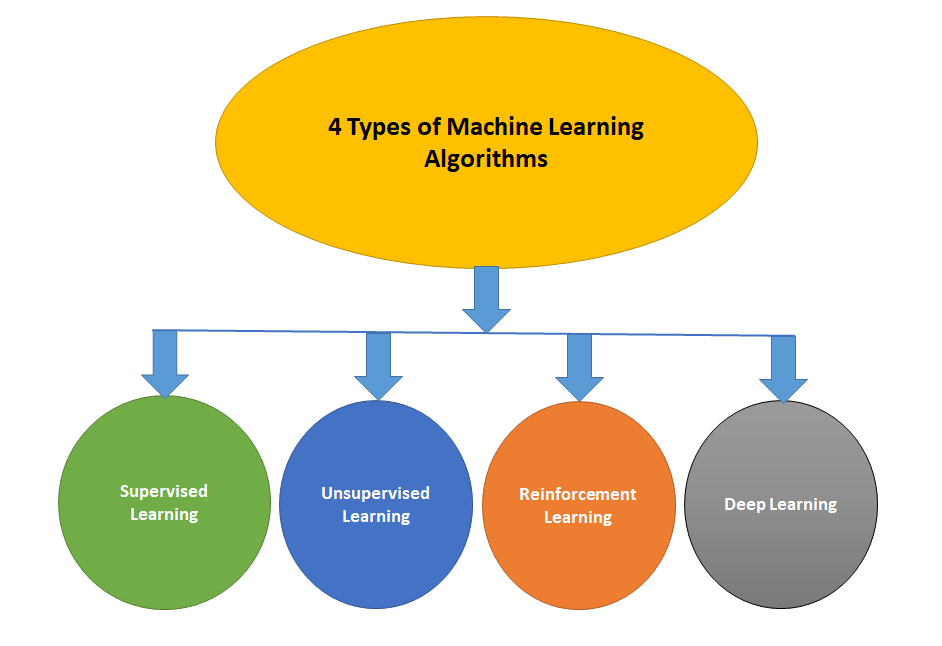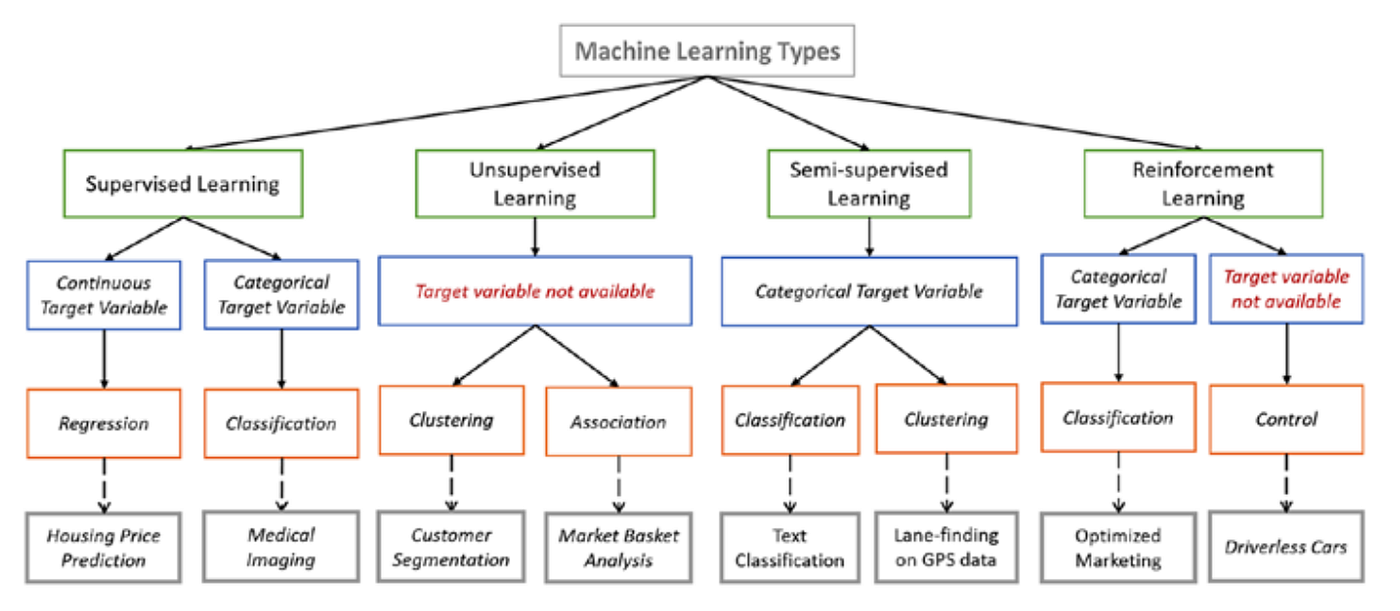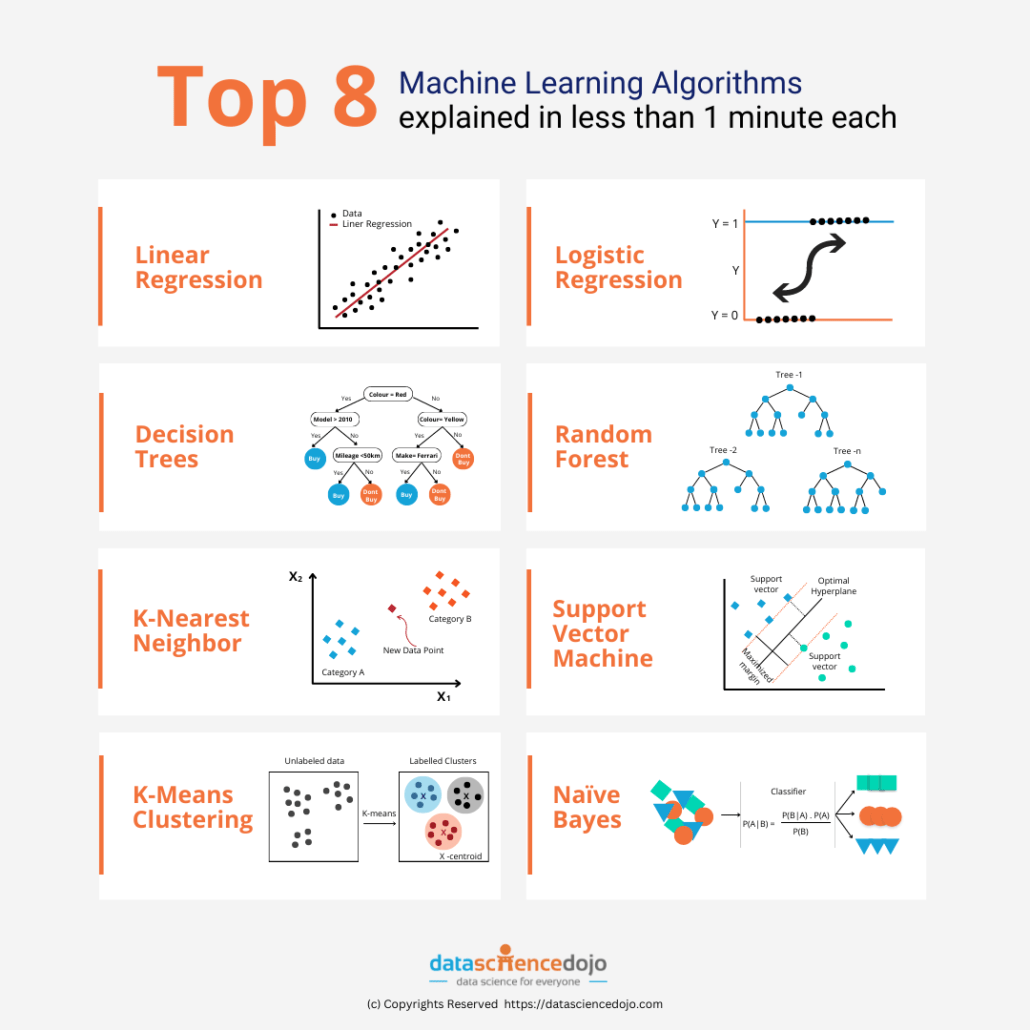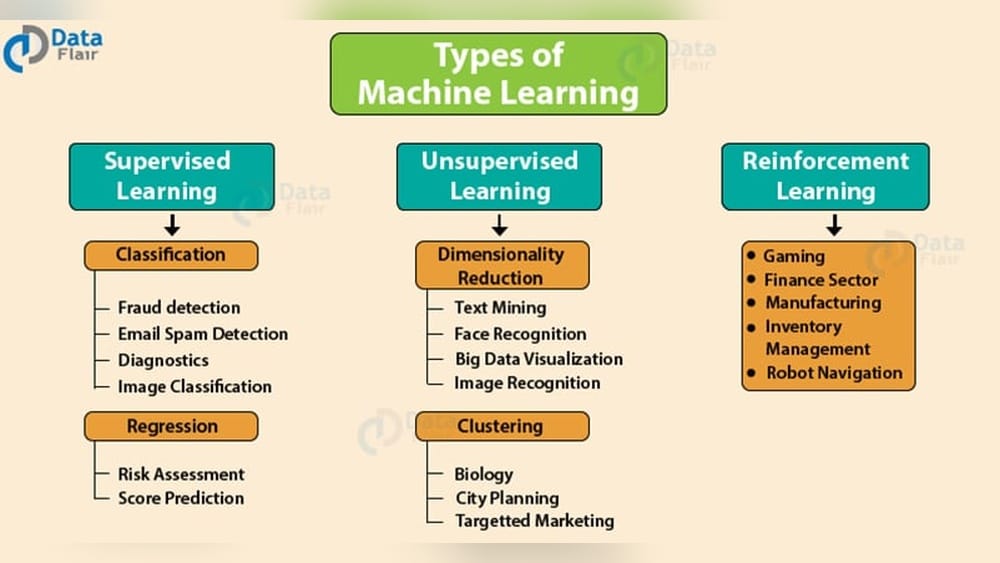Discover Machine Learning Types of Algorithms and learn how each method boosts accuracy, reveals patterns, and drives smarter, data-powered results.
Whether you want to predict future trends, classify information, or find hidden patterns, knowing the right algorithm to use can make all the difference. You’ll discover the main categories of machine learning algorithms—supervised, unsupervised, semi-supervised, and reinforcement learning—and how each one can help you solve real-world problems.
Get ready to explore these algorithms in a simple and clear way that will boost your confidence and skills in machine learning. Keep reading to find out which algorithm fits your needs perfectly!
Are you curious about how machines learn from data and make smart decisions? Understanding the types of machine learning algorithms is the key to unlocking this powerful technology.
Whether you want to predict future trends, classify information, or find hidden patterns, knowing the right algorithm to use can make all the difference. You’ll discover the main categories of machine learning algorithms—supervised, unsupervised, semi-supervised, and reinforcement learning—and how each one can help you solve real-world problems.
Get ready to explore these algorithms in a simple and clear way that will boost your confidence and skills in machine learning. Keep reading to find out which algorithm fits your needs perfectly!

Credit: gerege.com
Supervised Learning
Supervised learning is a key type of machine learning. It uses labeled data to teach models. The model learns to predict outcomes from input data. This method is widely used in many real-world applications. It helps solve problems like spam detection and weather forecasting.
Classification Algorithms
Classification algorithms assign input data to specific categories. They work with discrete labels such as “spam” or “not spam.” Common tasks include image recognition and email filtering. These algorithms learn from past examples to make decisions. They improve accuracy by comparing predictions with actual labels.
Regression Algorithms
Regression algorithms predict continuous values instead of categories. They estimate numbers like house prices or temperatures. These models find relationships between input features and output values. They minimize the difference between predicted and real numbers. Regression helps in financial forecasting and risk assessment.
Popular Models
Some popular supervised learning models include decision trees, support vector machines, and neural networks. Decision trees split data into branches for clear decisions. Support vector machines find the best boundary between classes. Neural networks mimic the human brain to learn complex patterns. These models perform well with enough quality data.

Credit: ai.plainenglish.io
Unsupervised Learning
Unsupervised learning is a type of machine learning where the system learns patterns from data without labeled answers. The algorithm explores the data on its own to find hidden structures. This approach helps when we do not have predefined categories or outcomes. It is useful for discovering relationships and grouping data based on similarities.
Clustering Techniques
Clustering groups similar data points into clusters. Each cluster contains data that shares common features. Popular methods include K-means, Hierarchical clustering, and DBSCAN. These techniques help organize data into meaningful groups without prior knowledge. Clustering is widely used for customer segmentation and image analysis.
Dimensionality Reduction
This technique reduces the number of variables in data while keeping important information. It simplifies complex data, making it easier to analyze and visualize. Principal Component Analysis (PCA) and t-SNE are common methods. Dimensionality reduction helps improve speed and performance of machine learning models.
Use Cases
Unsupervised learning is valuable in many fields. It helps detect fraud by identifying unusual patterns. In marketing, it segments customers based on behavior. In healthcare, it finds new disease patterns from patient data. These examples show how unsupervised learning reveals insights without labeled data.
Semi-supervised Learning
Semi-supervised learning is a type of machine learning algorithm. It uses both labeled and unlabeled data to train models. This approach sits between supervised and unsupervised learning. It helps improve learning accuracy with less labeled data. This method is useful when labeling data is expensive or time-consuming.
Combining Labeled And Unlabeled Data
Semi-supervised learning starts with a small amount of labeled data. Then, it adds a large amount of unlabeled data. The model learns patterns from both sets. Labeled data guides the learning process. Unlabeled data helps the model understand the data structure better. This combination reduces the need for extensive manual labeling.
Applications
Semi-supervised learning works well in many fields. It is used in image recognition to improve accuracy with fewer labels. It helps in speech recognition by learning from vast unlabeled audio. In medical diagnosis, it supports models with limited labeled patient data. It also aids text classification and natural language processing tasks. This learning type offers practical solutions in real-world problems.
Reinforcement Learning
Reinforcement learning is a unique type of machine learning. It teaches computers to make decisions by trying actions and learning from results. The process involves an agent that interacts with an environment and receives feedback. Over time, the agent learns which actions lead to better outcomes. This type of learning is useful in robotics, gaming, and many automated systems.
Agent And Environment Interaction
In reinforcement learning, the agent takes actions in an environment. The environment responds with new situations and rewards. The agent’s goal is to choose actions that maximize long-term rewards. This interaction is continuous, forming a feedback loop. The agent learns by exploring and exploiting the environment.
Reward Systems
Rewards guide the agent’s learning process. Positive rewards encourage good actions. Negative rewards or penalties discourage poor choices. The agent uses these rewards to update its strategy. The reward system helps the agent understand which actions work best. This system is key to improving performance over time.
Common Algorithms
Several algorithms power reinforcement learning. Q-learning helps agents learn the value of actions. Deep Q-Networks combine Q-learning with neural networks. Policy Gradient methods optimize the agent’s policy directly. Actor-Critic algorithms blend value and policy learning. These algorithms are popular for solving complex decision problems.
Algorithm Selection Factors
Selecting the right machine learning algorithm is vital for project success. Several factors influence this choice. Understanding these factors helps you pick the best algorithm for your needs.
Data Type And Quality
The kind of data you have affects algorithm choice. Some algorithms work best with numbers, others with text or images. Data quality matters too. Clean, accurate data leads to better results. Noisy or missing data can confuse algorithms and reduce performance.
Problem Complexity
Simple problems need simpler algorithms. Complex problems may require advanced models. Consider how many features your data has. Also, think about the relationships within data. Complex patterns need algorithms that can capture them well.
Performance Metrics
Different tasks require different success measures. Accuracy suits classification problems. Mean squared error fits regression tasks. Speed and memory use also matter. Choose an algorithm that balances performance and resources.
Real-world Applications
Machine learning algorithms power many tools and services used daily. These algorithms analyze data patterns and help make decisions without human intervention. Their ability to learn from data makes them useful across various industries.
Understanding real-world applications shows how different algorithms solve unique problems. From security to marketing, machine learning adapts to many fields with ease.
Facial Recognition
Facial recognition uses machine learning to identify people by their faces. Algorithms learn features like eyes, nose, and mouth shapes. This technology helps unlock phones, verify identities, and enhance security. It quickly compares faces against large databases to find matches. Facial recognition improves safety in airports and public places.
Customer Segmentation
Customer segmentation groups people based on their behavior and preferences. Machine learning finds patterns in purchase history, browsing habits, and demographics. Businesses use these groups to target ads and offers more effectively. This helps companies increase sales and keep customers happy. Segmentation makes marketing smarter and more personalized.
Predictive Analytics
Predictive analytics uses past data to forecast future events. Machine learning models identify trends and predict outcomes like sales or equipment failure. This helps companies plan better and reduce risks. For example, stores predict product demand to manage stock. Predictive analytics improves decision-making in many industries.
Challenges And Best Practices
Machine learning algorithms face many challenges that affect their success. Understanding these challenges helps create better models. Best practices improve accuracy and efficiency. This section covers key challenges and tips to handle them.
Overfitting And Underfitting
Overfitting happens when a model learns too much from training data. It performs well on training but poorly on new data. Underfitting occurs when a model is too simple. It cannot capture the data’s patterns well. Balance is essential. Use techniques like cross-validation and regularization to avoid these issues.
Data Preprocessing
Data quality impacts machine learning results. Raw data often contains noise, missing values, and errors. Clean data by removing duplicates and filling missing values. Normalize or scale features to help algorithms learn better. Good preprocessing reduces errors and speeds up training.
Model Evaluation
Evaluating a model shows how well it performs. Use metrics like accuracy, precision, recall, and F1-score. Split data into training and testing sets to check performance on unseen data. Regularly evaluate models to detect problems early. This practice ensures reliable and robust results.

Credit: www.sinfoniagulfcoast.org
Read More : Learn Machine Learning: Step-by-Step Guide to Master AI Skills
Frequently Asked Questions
What Are The 4 Types Of Machine Learning Algorithms?
The four types of machine learning algorithms are supervised, unsupervised, semi-supervised, and reinforcement learning. Each type learns differently from data to make predictions or decisions.
What Are The 7 Types Of Machine Learning?
The seven types of machine learning are supervised, unsupervised, semi-supervised, reinforcement, self-supervised, deep learning, and evolutionary learning. Each type uses different data and techniques to train models for specific tasks and improve performance over time.
What Are The Top 10 Machine Learning Algorithms?
Top 10 machine learning algorithms are Decision Trees, Random Forest, Support Vector Machines, K-Nearest Neighbors, Linear Regression, Logistic Regression, Gradient Boosting, K-Means Clustering, Principal Component Analysis, and Neural Networks. These algorithms handle classification, regression, and clustering tasks efficiently.
What Are The Main 3 Types Of Ml Models?
The main three types of ML models are supervised, unsupervised, and reinforcement learning. Supervised learns from labeled data. Unsupervised finds patterns in unlabeled data. Reinforcement learns by receiving rewards or penalties through interaction.
Conclusion
Machine learning uses different algorithms to solve problems. Each type serves a unique purpose. Supervised learning needs labeled data to predict outcomes. Unsupervised learning finds patterns without labels. Reinforcement learning learns by trial and error. Choosing the right algorithm depends on your data and goals.
Understanding these types helps you apply machine learning effectively. Keep exploring to see how algorithms shape technology today.



